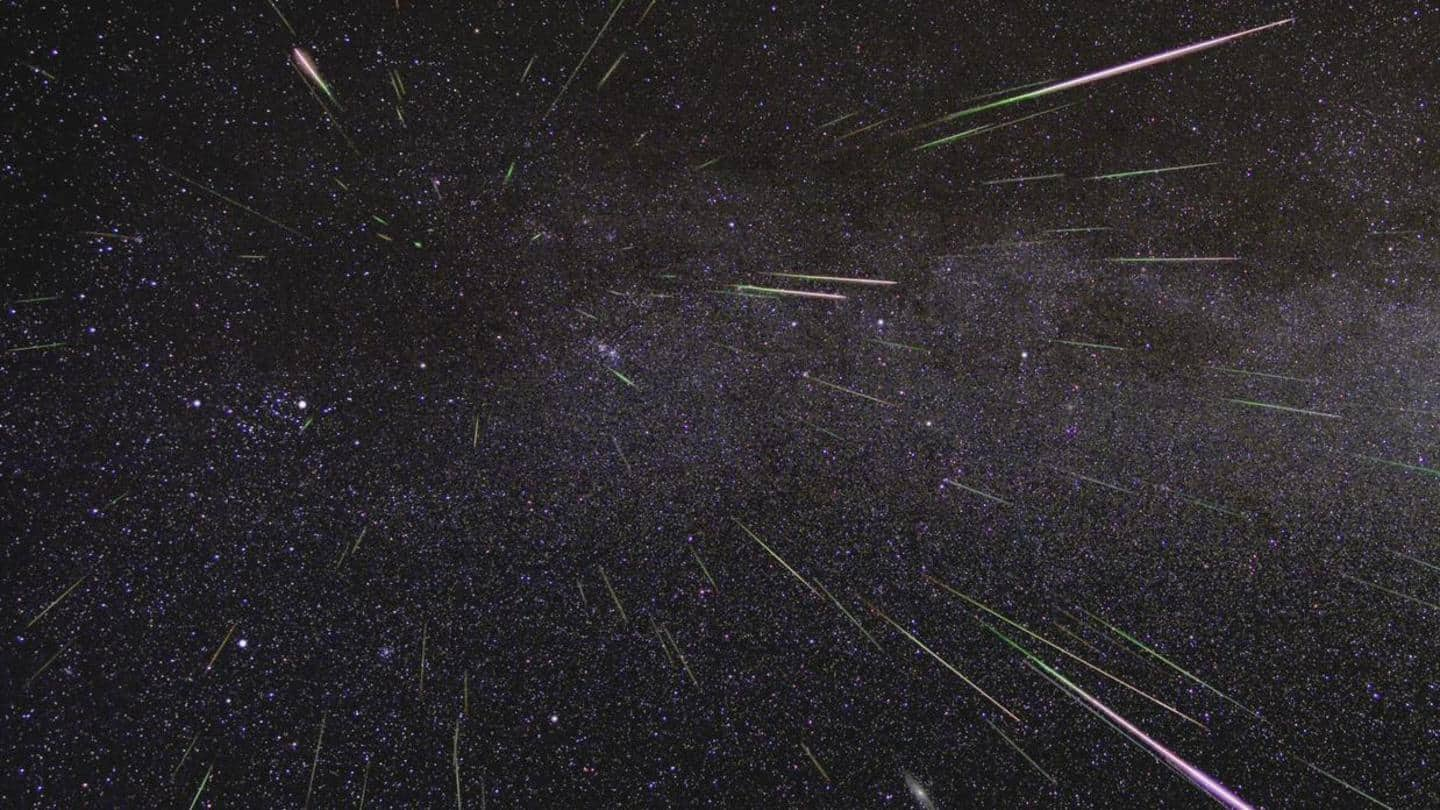
How and when to watch Perseid meteor shower in 2022
What's the story
Every year, Earth crosses a thick trail of debris left over by a passing comet. The result is a breathtaking night glistened by meteors. Considered one of the best meteor showers of the year, the Perseid is set to peak on August 12-13 this year, as per the International Meteor Organization. The Perseids produce over 100 meteors per hour.
Context
Why does this story matter?
The last time the Swift-Tuttle comet visited our solar system was in 1992. Can you imagine that debris left by the comet then enters our atmosphere every year and gives us a magnificent show? The Perseid meteor shower is a show to behold. Head out to your lawn, pull out a lounge chair, and enjoy the universe's masterpiece.
Meteor shower
What causes the Perseid meteor shower?
Swift-Tuttle, a comet discovered by Lewis Swift and Horace Tuttle in 1862, takes about 133 years to orbit the sun. It has an oblong orbit filled with debris. When Earth crosses this orbit between July 17 and August 24, some of the bigger pieces smash into our atmosphere at high speeds. These pieces burn up upon entering the atmosphere and appear as shooting stars.
Full moon
Full moon above the horizon will reduce visibility of meteors
The Perseids are named after the Perseus constellation. This is the point from which the meteors seem to originate, called the radiant. They rarely disappoint when it comes to the meteor show, but the full moon could play spoilsport this year. However, since the Perseids produce many bright meteors, the glare of the moon shouldn't be a problem to witness the spectacle.
When to watch
August 13 will be the peak this year
To watch the Perseids at their best, you should know when to watch them. The peak of this year's shower will be on August 13 morning. In India, the strongest shower will occur at 6:30 am. Theoretically, the best time to observe is between 3:00 and 4:00 am local time. The further away from August 13, the weaker the meteor display will be.
Information
Peak activity of the shower shifts forward every year
The time of maximum activity of the Perseid meteor shower shifts forward by six hours every year. This is due to Earth's revolution around the sun which takes 365 1/4 days. That's why the peak activity will be on August 13 morning this year.
How
Do not look directly at the constellation or radiant
It's important to know how to watch the meteor shower to maximize your experience. Many tend to look in the direction of the Perseus constellation and the radiant, but meteors near the radiant will be short. To view longer meteors, it's better to look at an angle. Also, try to keep the moon behind you when you stargaze to block its light.
Tips
Eyes should be accustomed to the darkness
Keep an eye out for "earthgrazing" Perseids that skim Earth's atmosphere and are viewed early in the night. Let your eyes get accustomed to the dark. It will take 30 minutes to one hour. Head to a rural area that is as dark as possible. Remember, the more stars you can see, the more the chances of catching faint meteors.
Live streaming
Virtual Telescope project is hosting live streaming of meteor shower
The best part of watching meteor showers is that you don't need a telescope or binoculars to see them. All you need is your own eyes. If that's not enough, you can watch the live streaming of the meteor shower hosted by the Virtual Telescope project that started at 7am IST on August 11.